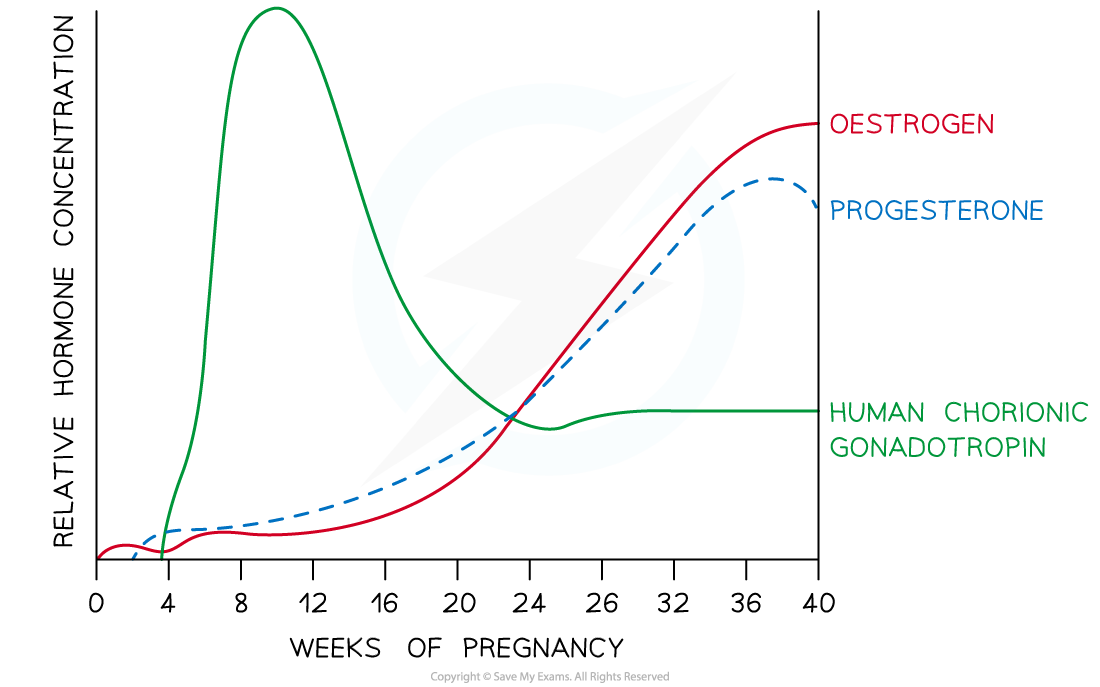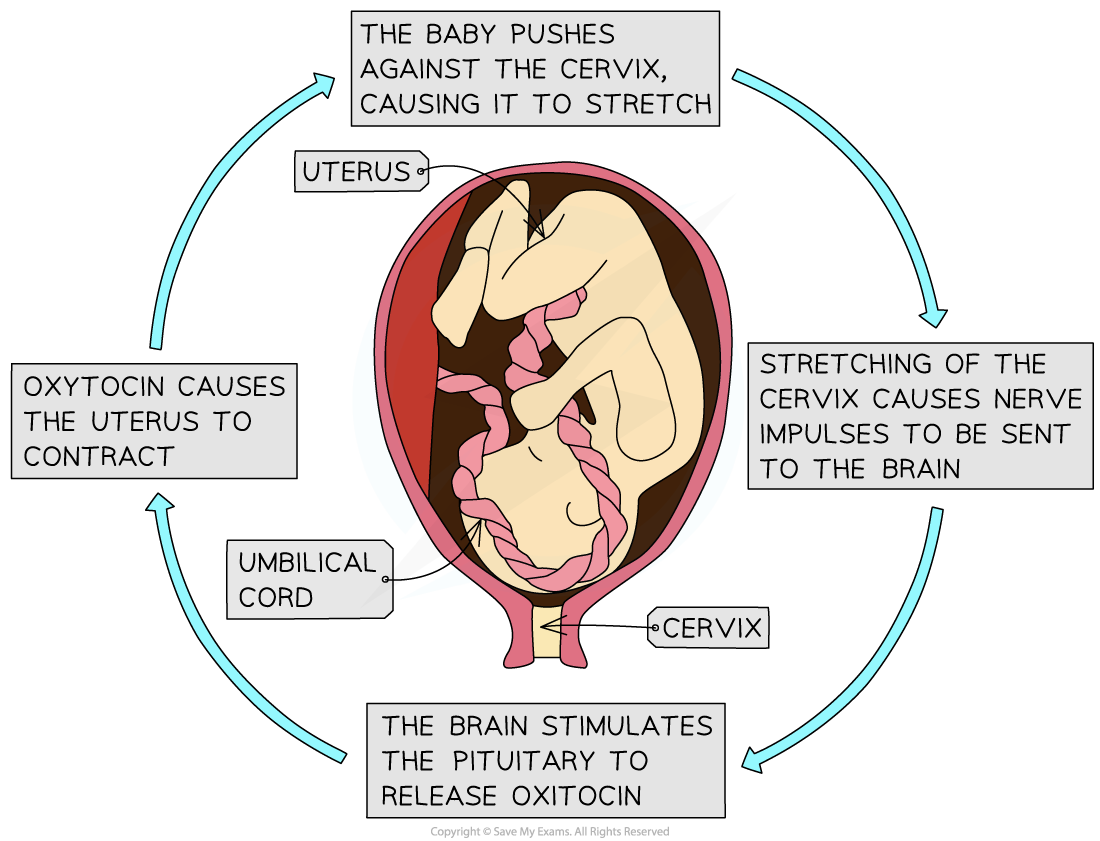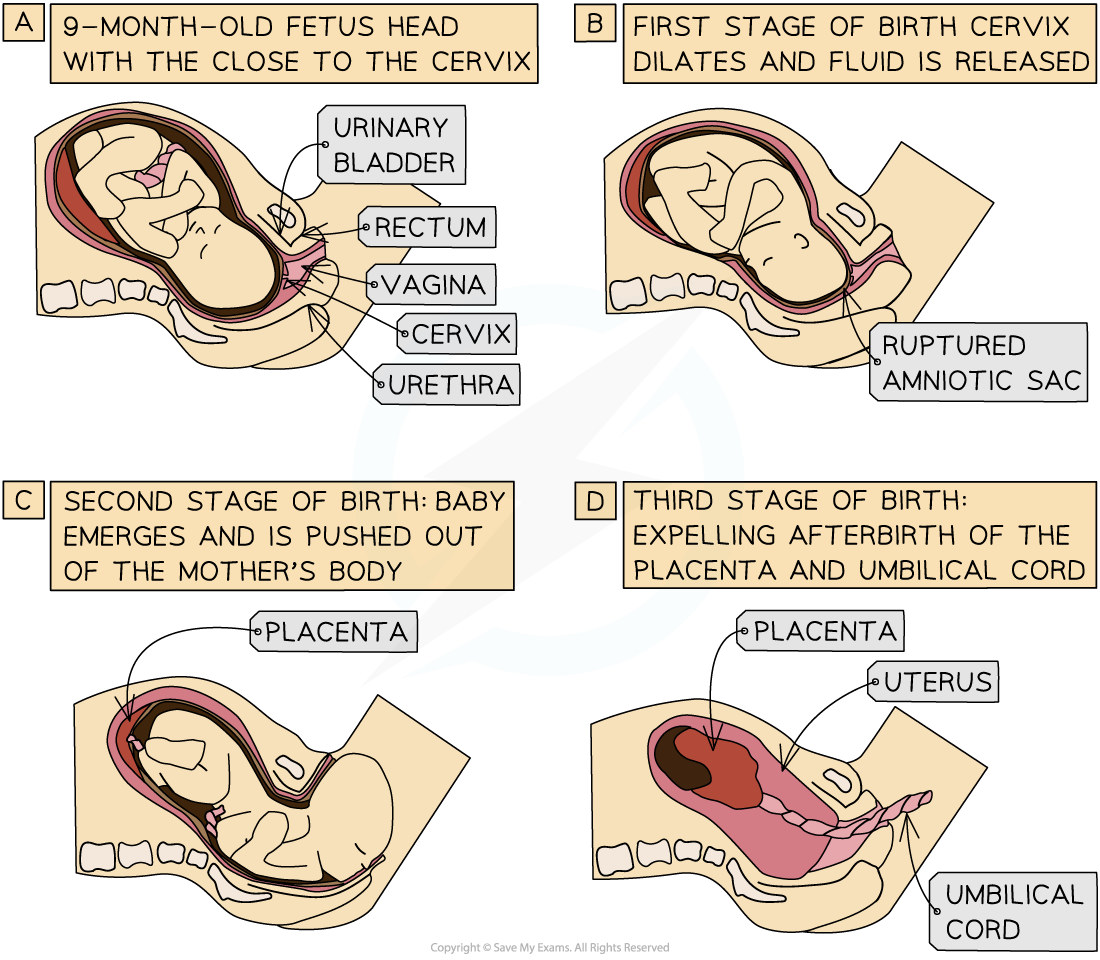Role of hCG in Early Pregnancy
- Shortly after the developing embryo implants into the endometrium it begins secretion of the hormone human chorionic gonadotropin (hCG)
- hCG is secreted during the first 8-10 weeks of pregnancy
- The role of this hormone is to:
- Stimulate the corpus luteum in the ovary to maintain secretion of oestrogen and progesterone (in order to continue the development of the endometrium)
- Stimulate the growth of the placenta and uterine enlargement
- Inhibit menstruation
- During the second trimester (after 12 weeks) hCG declines and the placenta takes over the role of stimulating the secretion of oestrogen and progesterone
- Pregnancy tests detect the presence of hCG in the mother's urine and can be used to confirm a positive pregnancy

hCG increases during the first 12 weeks of pregnancy to stimulate the release of oestrogen and progesterone; after 12 weeks hCG declines as the placenta takes over
Hormones & Birth
The role of progesterone
- The hormone progesterone is secreted by the placenta throughout pregnancy
- Progesterone inhibits the production of another hormone, oxytocin, by the pituitary gland
- Progesterone inhibits contractions of the muscles of the uterus wall (the myometrium), which could induce birth if not inhibited
- At the end of pregnancy, the foetus produces the hormone oestrogen, which signals to the placenta to stop producing progesterone, thereby initiating the production of oxytocin by the pituitary gland and the start of labour (and the start of the muscular contractions that eventually lead to the birth of the baby)
The role of oestrogen
- At the end of pregnancy, the hormone oestrogen is produced by the foetus and the placenta
- Oestrogen makes the uterine wall more sensitive to oxytocin
- Progesterone is also inhibited by oestrogen
Labour
- Oxytocin now stimulates contractions of the muscles in the myometrium
- Oxytocin is released by the pituitary gland in the brain
- Stretch receptors in the cervix detect the contractions and signal the pituitary gland to increase oxytocin secretion
- More oxytocin creates further contractions, which in turn signal for further release of oxytocin in this positive feedback loop
- This process increases the contractions slowly and rhythmically

The positive feedback loop stimulates the release of oxytocin and causes the contraction of the uterus wall
Birth
- Relaxation of the cervix muscles causes the cervix to dilate and widen
- Uterine contractions continue and cause the amniotic sac to burst, releasing the amniotic fluid through the open cervix
- The baby is pushed out through the cervix and vagina as contractions continue
- As the umbilical cord is cut, the baby is physiologically separated from the mother
Afterbirth
- After the baby has been delivered, uterine contractions continue and the placenta will separate from the uterine wall
- The mother will then birth the placenta and remains of the umbilical cord

The stages of birth, which are initiated by the hormone oxytocin